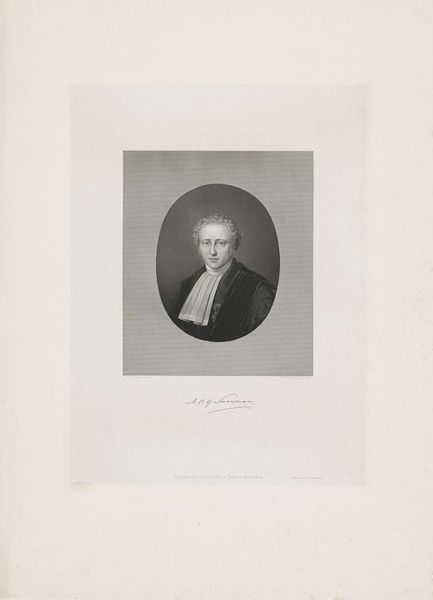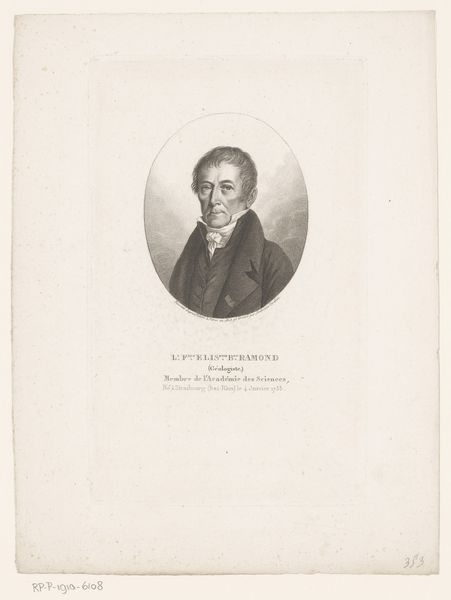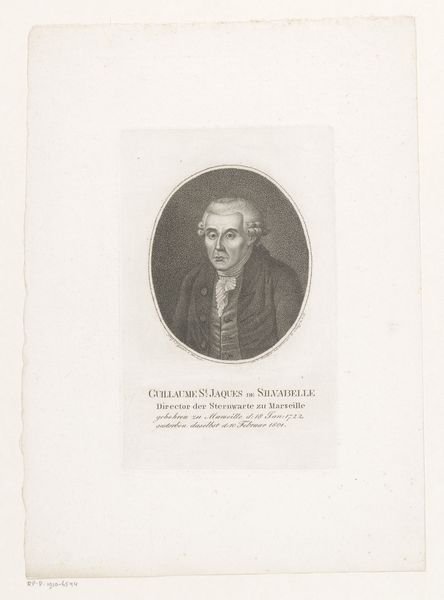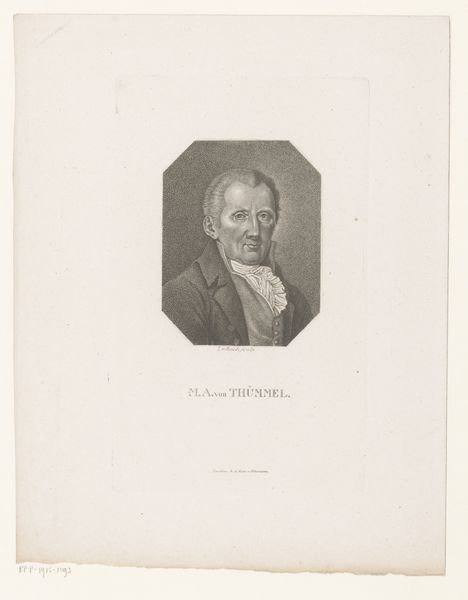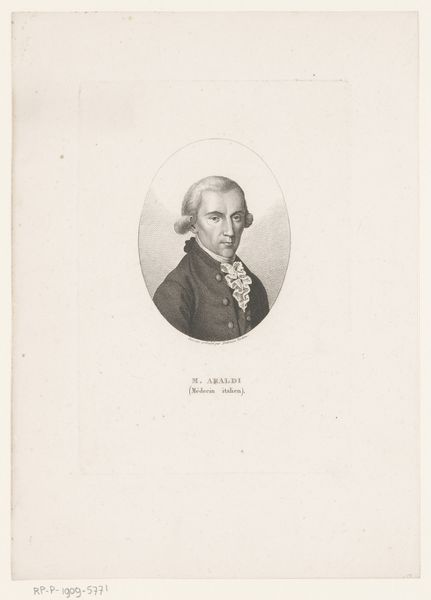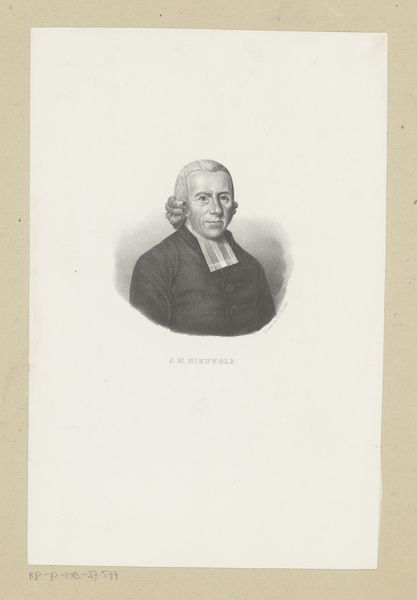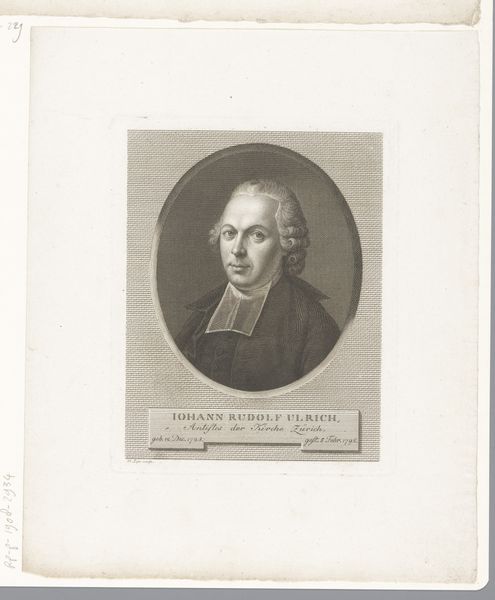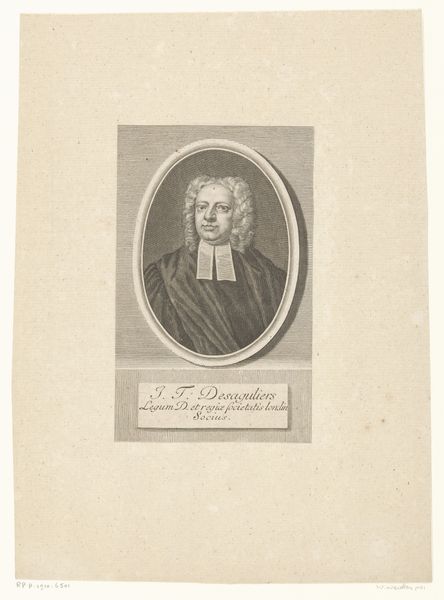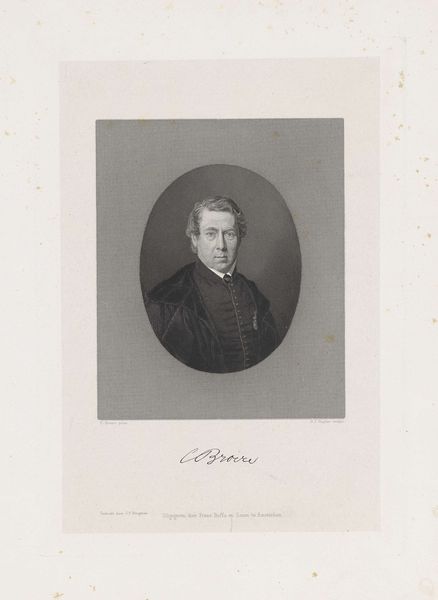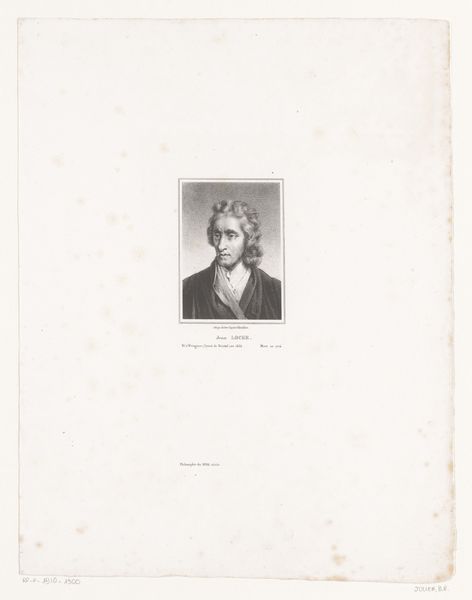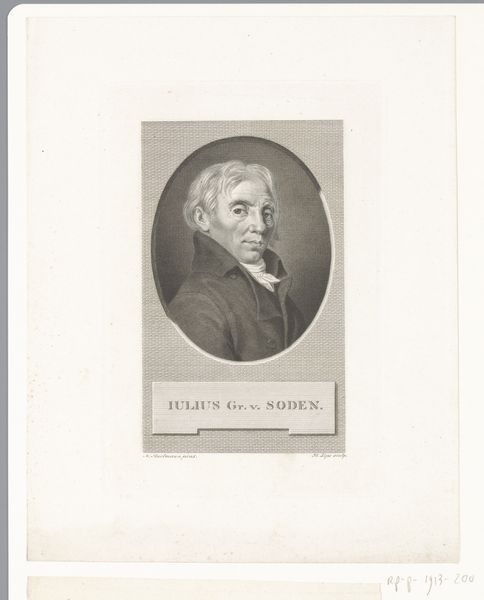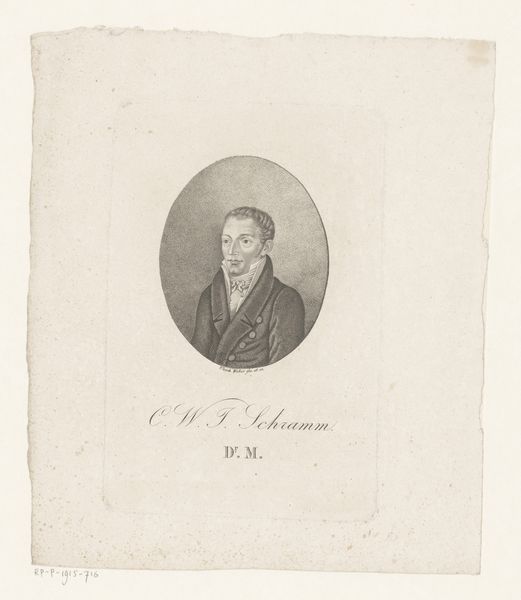
drawing, print, etching, graphite
#
portrait
#
drawing
# print
#
etching
#
tonal
#
graphite
#
white background
#
academic-art
#
realism
Dimensions: height 295 mm, width 205 mm
Copyright: Rijks Museum: Open Domain
Curator: Before us we have "Portret van de onderwijzer Bernardus Franciscus Suerman," a drawing from 1858 by Benoit Taurel, housed here at the Rijksmuseum. It appears to be an etching or print, perhaps with graphite details? Editor: It definitely evokes a sense of somber respectability. The monochrome palette and tightly framed oval composition contribute to a feeling of constraint and perhaps even slight melancholy. Curator: Let's consider the context: Bernardus Franciscus Suerman was a teacher, and Taurel captured his likeness at a time when societal roles were highly defined. The image conveys not just the man, but the *idea* of a respectable educator. This speaks to the values of the era: duty, intellect, and moral guidance. I see it within the broader narrative of how authority figures were represented in 19th-century Dutch society. Editor: Absolutely, and what interests me is how the print itself democratizes access to this representation. The relative ease of reproduction means his image could circulate beyond the elite circles, potentially reinforcing ideals of education and civic virtue amongst a wider public. How might this image shape the perception and politics of teaching at the time? Curator: It’s a question of visibility and influence. Etchings like this served almost as calling cards, announcing a certain social position and projecting an image intended for public consumption. Considering Suerman's role as an educator, his stern gaze projects a sense of disciplinary oversight and seriousness of intent, characteristics he surely aimed to impress. Editor: I am struck, though, by the limited color palette. What choices did Taurel have to make to highlight, given only shades, details of the person's features? What impact did the contrast, in all its limitations, provide for contemporary audiences? Curator: Indeed. It directs our focus to form, expression, and subtle detailing that perhaps more colorful artworks may wash out. By stripping away colour, the essence of Suerman and his contribution become what’s important in the message of the work. Editor: Seeing this now makes me reconsider how pedagogical roles and public perceptions intertwine, and how images have always had their influence, something well reflected in Suerman's dignified but solemn countenance. Curator: It underscores the layered complexity inherent in even the simplest portrait, inviting a deeper appreciation of art’s public role.
Comments
No comments
Be the first to comment and join the conversation on the ultimate creative platform.
